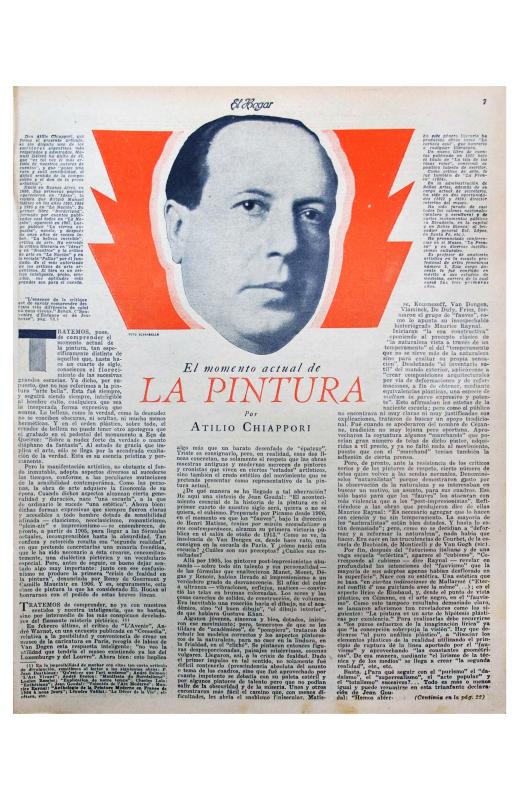The modernization of art forms in Argentina had one of its main periods in the 1920s. Following the artists linked to the Martín Fierro journal—Emilio Pettoruti (1892–1971), Xul Solar (1887–1963) and Norah Borges (1901–98)—towards the end of the decade Alfredo Guttero’s (1882–1932) activities came to light, in addition to that of the Artistas del Pueblo [Artists of the Town] involved with social political engraving, and the local activity of the artists who trained in Paris: Aquiles Badi (1894–1976), Horacio Butler (1897–1983), Héctor Basaldúa (1895–1976), Raquel Forner (1902–88), Alfredo Bigati (1898–1964), Antonio Berni (1905–81) and Lino Enea Spilimbergo (1896–1964).
During all this process of modernization, opposition was brought against “traditional” artists who practiced Post-Impressionist Naturalism. Modern artists, led by Butler, published an open letter criticizing Atilio Chiappori, a defender of the figurative aesthetic then defined as the “national art.” The letter, written by Butler in Paris, is a response to Chiappori’s attack by to modern art while serving as the director of the Museo Nacional de Bellas Artes [National Museum of Fine Arts] (document no. 733960). A group of Modern artists—Norah Borges, Antonio Sibellino, Xul Solar, and Alfredo Guttero, among others—signed the open letter. Berni published an article strongly criticizing both positions (“Cada uno a su lugar” [“To each his own”], document no. 732982). Butler returned to Argentina in 1933 to become one of the chief defenders of pure art, in overt opposition to Berni and Spilimbergo, his recent partners of the Parisian stage.
Argentina is a publication directed by Cayetano Córdova Iturburu (1902–77) in defense of art’s autonomy, published in the years 1930–31. Later, Córdova Iturburu joined the defenders of political art.


